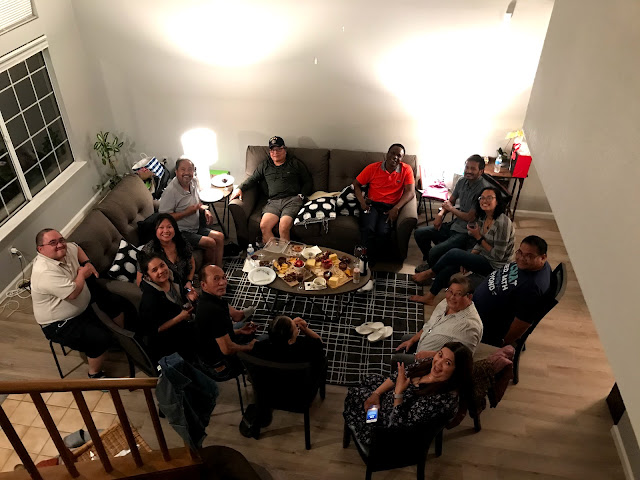Val's birthday dinner
We invited a larger group, for the first time, after everyone who we planned to invite were already fully immunised (i.e., two weeks had passed since their second dose of Moderna or Pfizer COVID-19 vaccine, or since their shot of the J&J vaccine). And the occasion: Val's nth birthday (many weeks delayed as we waited for the stragglers to become fully immunised).
Ate Maddie outdid herself by creating multiple cheese platters adorned with fresh fruit, jams, and biscuits. JP, once again, cooked scrumptious sous-vide salmon. It's so good that my son ate most of my salmon portion! Aung Maylika, our go-to restaurant for Burmese fare, also impressed our guests with its tea leaf salad and other dishes.
I wasn't in the loop most of the time because I was taking care of the little one (who fell asleep despite Kuya Merlin's booming voice and infectious laughter); however, it proved to be an excellent party because the company was great, the conversations were flowing, and we learned not to take family for granted as we survived the first round of COVID-19 mostly unscathed (note that the isolation caused by stay-at-home orders detrimentally affected everyone's mental state for a year). California's statistics in terms of hospitalisations, deaths, and new cases were at their all-time lows while vaccination rates were quite high at the county level when we celebrated Val's birthday.
I say first round because when we gathered for dinner, the more transmissible delta variant was still confined in India. Unfortunately, California's numbers have risen already because of the delta variant (we're back at 5500+ new cases a day this week). Most of the serious cases are of unvaccinated people.
We don't know if this will be the only time we'll be able to gather like a big family. With the delta variant going around, I have already declined a baby shower invitation and we've resumed wearing our masks outdoors (after a month of only using our masks indoors).


Comments
Post a Comment
Thank you for dropping by!
Before moving on, please share your thoughts or comments about the post. :)
Thanks again!